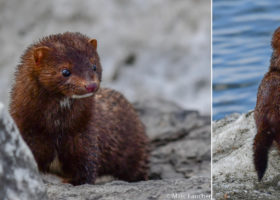
March 2018 iNaturalist Vermont Photo-Observation of the Month
Congratulations to Peggy and Marc Faucher for winning the March 2018 iNaturalist Vermont photo-observation of the month contest. The images of a wet Mink hunting along the shoreline was the most popular photo-observation.
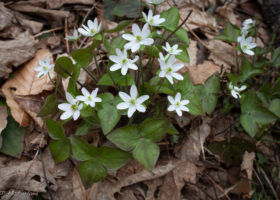
A Field Guide to April 2018
In April the northern forest is laid bare with cold desire. Sight, sounds, and smell – April leaves none of our senses void. Here’s our guide to some of the joys of April.
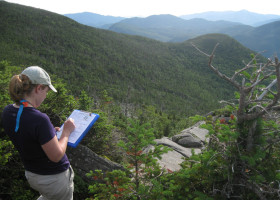
Mountain Birdwatch Brings a Mountain of Data to eBird
Since 2010 alone, several hundred Mountain Birdwatch citizen scientists have conducted 18,636 five-minute point counts at nearly 750 remote locations in the mountains of New York and New England. Recently, we uploaded more than 37,000 checklists spanning the last 17 years of the program to eBird.
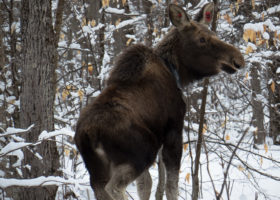
Outdoor Radio: Tracking Moose Health
Moose populations in Vermont and New Hampshire have undergone a rapid population decline for a variety of reasons. We join Jake Debow, a graduate student of the University of Vermont and biologist with Vermont Fish & Wildlife Department, to trek through deep snow near Maidstone Lake to find out more about the plight of Moose in the region.
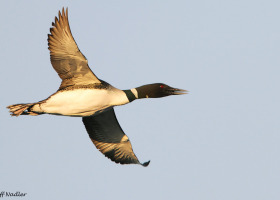
Where Are Common Loons in Late Winter?
If you travel to the coast this late winter or early spring, bring your binoculars and scan nearshore waters. You’ll likely find loons, and you might be lucky enough to hear one call.
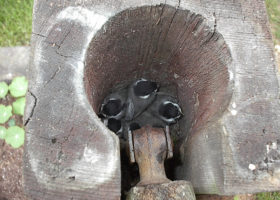
Breeding Yard Birds More Successful with Native Plants
The idyllic setting for nesting songbirds in our backyards is one filled with native plants, according to research published last summer.
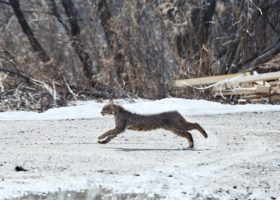
February 2018 iNaturalist Vermont Photo-Observation of the Month
Congratulations to Kyle Tansley for winning the February 2018 iNaturalist Vermont photo-observation of the month contest. His image of a running Bobcat was the most popular photo-observation.
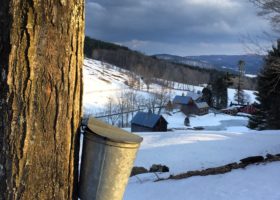
A Field Guide to March 2018
On Tuesday, March 20th at 12:15 PM spring arrives in the north. While the sun may be predictable, March weather is not. March is a month of battles between warm and cold, between winter’s refusal to leave and spring’s insistence on coming. So here’s some signs of spring in this Field Guide to March.
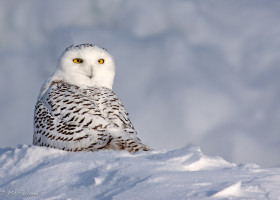
Searching for Snowy Owls
Like ghosts from the Arctic, Snowy Owls have descended from the far north this winter. Join VCE biologists Sara Zahendra and Kent McFarland on Outdoor Radio as they try to find a white bird in the white snowy world of Dead Creek Wildlife Management Area and talk about the natural history of Snowy Owls along the way.
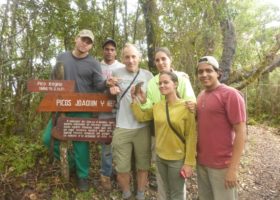
Team VCE-BIOECO Perseveres on Cuba’s Pico Turquino
VCE’s late January field expedition into the rugged Sierra Maestra mountains of eastern Cuba featured abnormally high rainfall, majestic cloud forests, grueling pre-dawn hikes, lively interactions with our Cuban partners, and… 7 Bicknell’s Thrushes. As always with this enigmatic songbird, more questions were raised than answered, but VCE’s work to clarify the species’ overwinter status on Cuba is making solid progress.
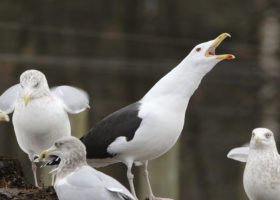
Outdoor Radio: Winter Gulls
We joined Bryan Pfeiffer, a VCE research associate and avid birder, at Grow Compost in Waterbury to witness a winter gull spectacle. Hundreds of gulls (and other birds) hang out amid this huge expanse of compost enjoying an endless feast, including a few rare arctic visitors like Glaucous Gulls. Listen to Outdoor Radio.
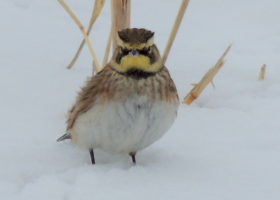
January 2018 iNaturalist Vermont Photo-Observation of the Month
Congratulations to Sue Wetmore for winning the January 2018 iNaturalist Vermont photo-observation of the month contest. Her image of a Horned Lark in the…
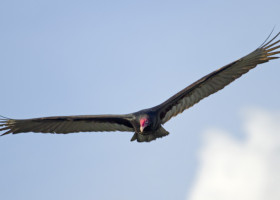
Field Guide to February 2018
This month, wildlife and the rest of us here in New England will cross a threshold – arbitrary yet not insignificant: 10 hours of daylight. Even though we’ve got lots more winter, we’ve also got change. So here’s a Field Guide to February to help get your hopes up, no matter what that groundhog predicts.

Two birds, One App: VCE’s eBird Workshop Gets Positive Response
On a beautiful Sunday in January, twenty-two bird nerds from all over Vermont and New Hampshire forwent the sunshine to…
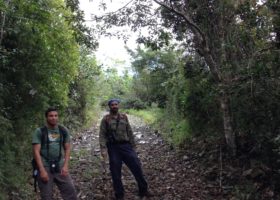
Seeking Puerto Rican Birds in the Wake of Hurricane Maria
After scouring the island of Puerto Rico for Bicknell’s Thrush (BITH) with our partners from Sociedad Ornitológica Puertorriqueña (SOPI) during the winters of 2015-16 and turning up only 11 birds, VCE figured our work there was largely done. Then Hurricanes Irma and Maria struck this past September.
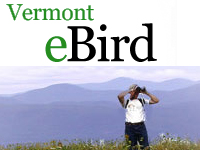
VCE Kicks Off Year of the Bird with eBird Workshop
Join us on Sunday, January 28th for a special hands-on workshop for learning to use eBird–the website and the app (Android or IOS). The workshop is from 1pm – 3:30pm and is open to the first 30 registered participants. No prior experience needed! Learn more…
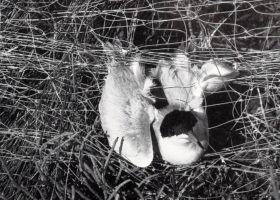
The Migratory Bird Treaty Act and bird conservation
Recent changes to the interpretation of the Migratory Bird Treaty Act threaten to undo decades of success in cooperative bird conservation.
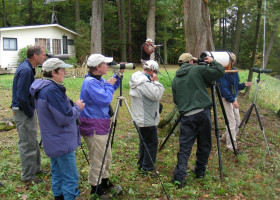
The 2017 Vermont eBird County Quest Awards
From an Eastern Screech Owl in Wilder on January 1st to a Snowy Owl in Bridport on December 31st, Vermont birders scoured fields and fens, mountains and meadows, lakes and lawns to discover as many bird species as possible during the 7th annual Vermont eBird County Quest.
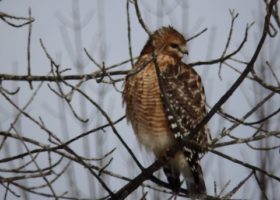
CBC Roundup: The 118th Christmas Bird Count by the Numbers
The Christmas Bird Count (CBC) season has come to an end and as we warm our frozen extremities and dream…
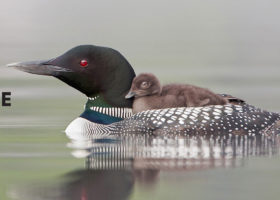
VCE Joins more than 80 organizations worldwide to protect birds and their habitats for Year of the Bird in 2018
In 2018, we mark the centennial of the Migratory Bird Treaty Act, the most powerful and important bird-protection law ever…
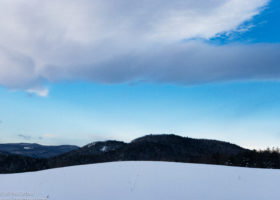
Field Guide to January 2018
Although the days are slowly growing longer, life in the Northeast now finds itself in the coldest depths of winter. January is about survival. Wildlife that doesn’t migrate adapts instead in order to make it to spring. Here’s a few tidbits of natural history happening outdoors this month around you.
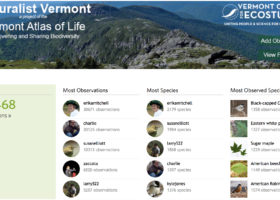
iNaturalist Vermont Builds Biodiversity Big Data in 2017
2017 was a big year for iNaturalist Vermont. We had 1,057 naturalists contribute over 56,250 observations representing more than 3,850 species. Read more about this amazing biodiversity data and the community that helps build it.
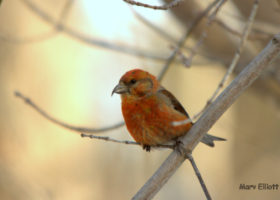
The Red Crossbill Enigma
Its finally happening. Red Crossbills are arriving. This year’s bumper cone crop for pine, spruce, larch, and hemlock is perhaps a once in couple-decades event. As a result, crossbills were predicted to flood into the region and birders have been waiting with anticipation.
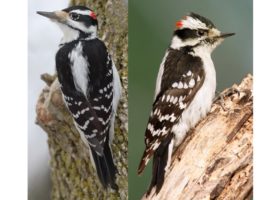
Why are Hairy Woodpeckers and Downy Woodpeckers so hard to tell apart?
Why do Hairy Woodpeckers and Downy Woodpeckers look so much alike? The answer might surprise you.
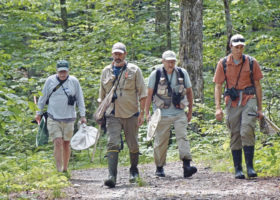
Vermont Dragonfly and Damselfly Atlas: 10,000 Odes and Counting
By most any measure, the 2017 field season of the Vermont Dragonfly and Damselfly Atlas (VDDA) was satisfying, surprising … and nearly heart-stopping.
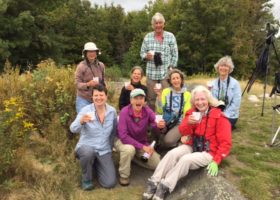
A Record Breaking Season for Putney Mountain Hawkwatch
Putney Mountain, Vermont’s only hawkwatch operated every day during fall migration, tallied a record 14,823 raptors this year, with an unprecedented Broad-winged Hawk flight.
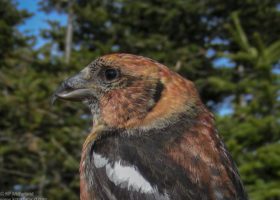
Outdoor Radio: The Unique Crossbill Beak
In this episode of Outdoor Radio, biologists Kent McFarland and Sara Zahendra meet up with Tom Berriman, avid birder and regional expert, in Moose Bog in search of the enigmatic crossbill

VCE Staff Picks 2017: Books for Nature Nerds
Nothing feels better on a cold winter night than curling up with a good book. Whether you are a nature…
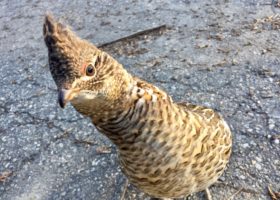
November 2017 iNaturalist Vermont Photo-Observation of the Month
Congratulations to Jason Berard for winning the November 2017 iNaturalist Vermont photo-observation of the month contest. His image of a curious Ruffed Grouse was the most popular photo-observation as measured by clicked ‘favs’.
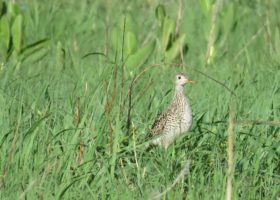
GPS Tags Reveal a Hidden Side to a Grassland Bird
GPS tags are revealing new and exciting insights on the epic, transcontinental migrations of Upland Sandpipers. VCE’s recent, ongoing research has revealed that this grassland specialist uses a surprising array of migratory habitats across its route. These range from busy airports, to steep mountain slopes, to Neotropical river banks, and even the open Atlantic Ocean (well, they don’t exactly stop there).
